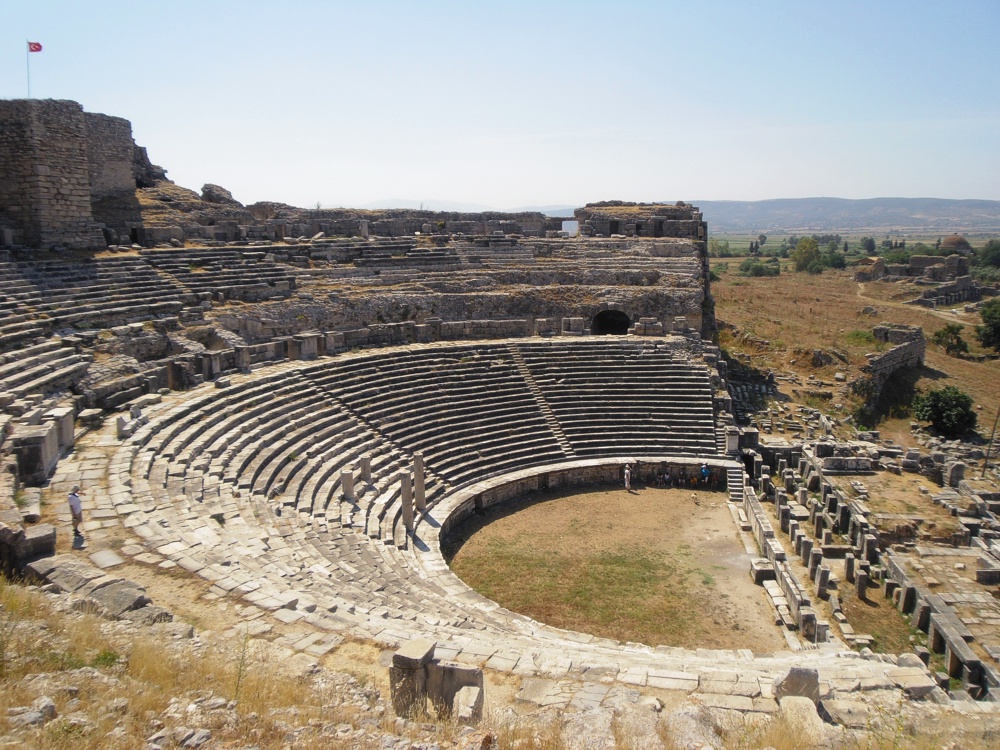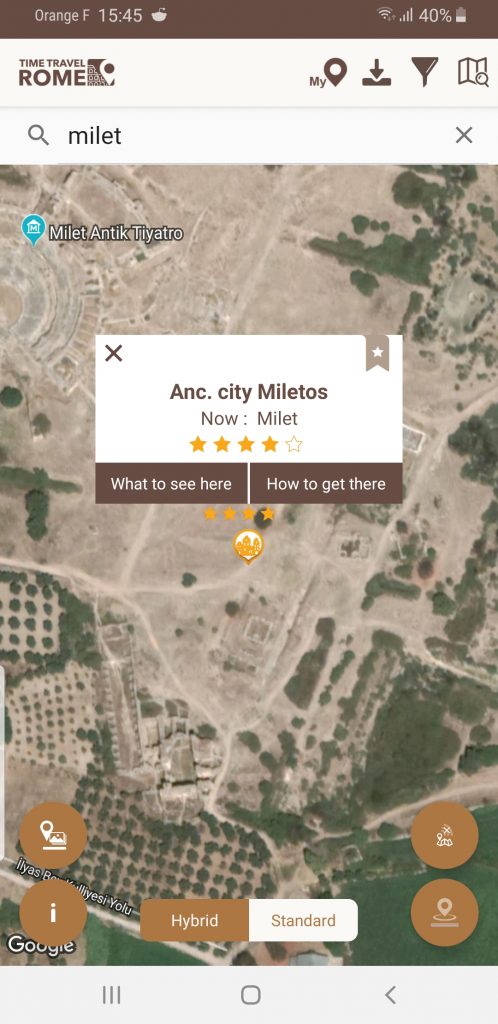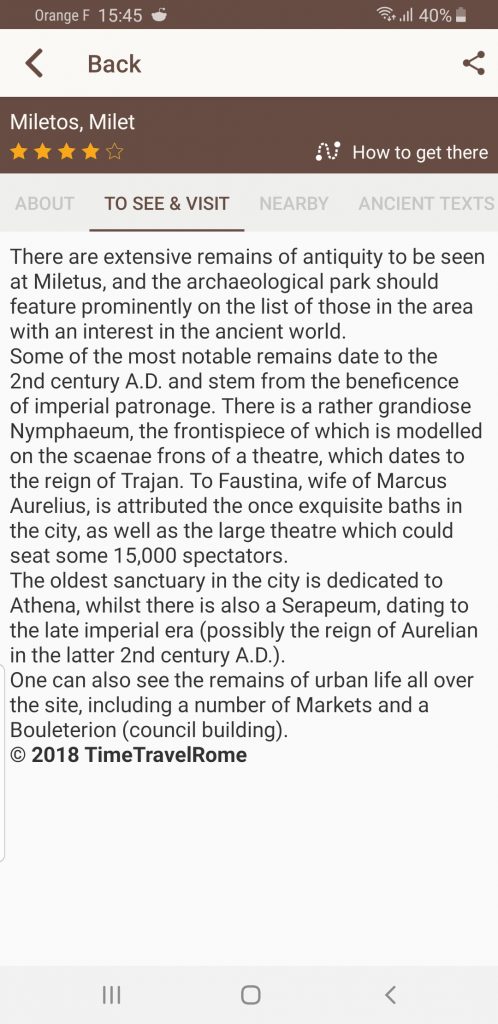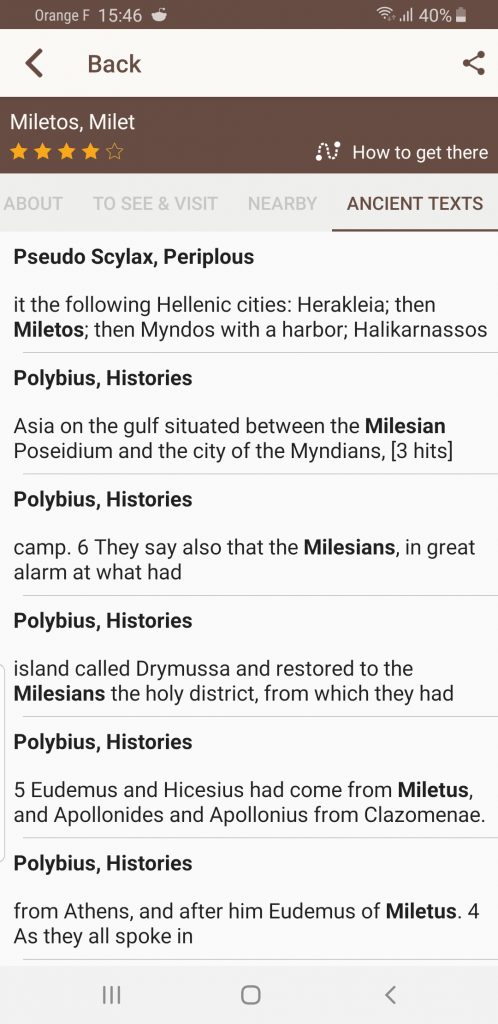Miletus has a long and rich history, which it displays in its wealth of archaeological ruins. The very earliest evidence dates to the Neolithic Era, and the city has been inhabited since. Its culture saw influence and varying control by the Minoans, Mycenaeans, Hittites, and Carians. During the conquests of Cyrus, it fell under Persian control, and then passed to Alexander and the Macedonians. Miletus maintained good relations with the initial successors of Alexander, but found itself the center of conflict between later rulers of the Hellenistic Kingdoms. In 133 B.C., it fell under Roman rule. The ancient histories mention the city in an interesting story. A young Julius Caesar was able to recruit a private fleet from Miletus following an encounter with Cicilian pirates.
An Unusual Prisoner
In 75 B.C., at the age of twenty-five, Julius Caesar was working toward political success. He gained military experience serving in Asia and Cilicia, earning a reputation for bravery at the Siege of Mytilene. After the engagement, he was awarded a Civic Crown, the second highest honor a citizen could earn. With a solid military reputation, the next step for Caesar was to distinguish himself politically. This meant giving speeches in law cases, and so he decided to travel to Rhodes to further study oration. While on the way to Rhodes, Cilician pirates captured his ship. They demanded that he pay a ransom of twenty talents to secure his freedom. In return, Caesar laughed at them, telling them they had no idea who they had captured. He insisted that they must accept no less than fifty talents.
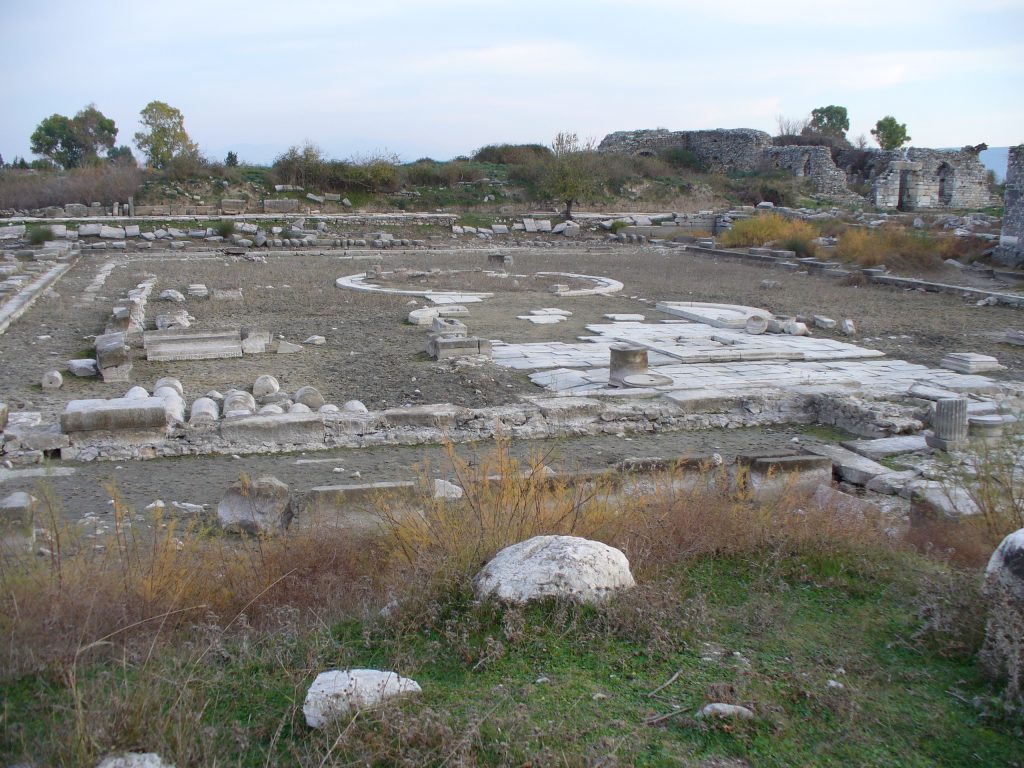
Temple of Apollo in Miletus by QuartierLatin1968 licensed under CC BY-SA 2.0
The pirates readily agreed, and they sent his friends away to gather the payment. Caesar remained in the custody of the pirates, with only two of his servants and one friend. Not willing to delay his study, he used his time with the pirates to practice writing speeches and poems. He barely behaved like a captive. He would recite his works to his captors, berate them as uninformed savages when they did not like one of his pieces, and laughingly say that he would crucify them all. This delighted the pirates, who found his youthful brashness amusing. They allowed him to wander among their boats and on their island. He began to behave more like one of their leaders than a prisoner. He joined them for games and exercises, and would send haughty messages demanding they be quiet when he was preparing to sleep.
Escape to Miletus
After thirty-eight days, his friends returned with the ransom, and the pirates freed Caesar. They ought to have listened more seriously to his threats. Caesar sailed immediately to Miletus, raised a fleet, despite being a private citizen, and returned to their island. His Miletan fleet captured the entire band, and imprisoned them at Pergamon. When he appealed to Marcus Junius, the governor of Asia, to execute them, Junius hesitated. The governor was thinking of the money that could be made from selling them as slaves. Caesar felt, however, that he must stand by his word. He had sworn to crucify the pirates, and so he would. He returned to Pergamon, and convinced the Roman legionaries there that Junius had given the order. In a small act of mercy, Caesar ordered their throats slit for a quick death. He then continued on to Rhodes to complete his study with Apollonius.
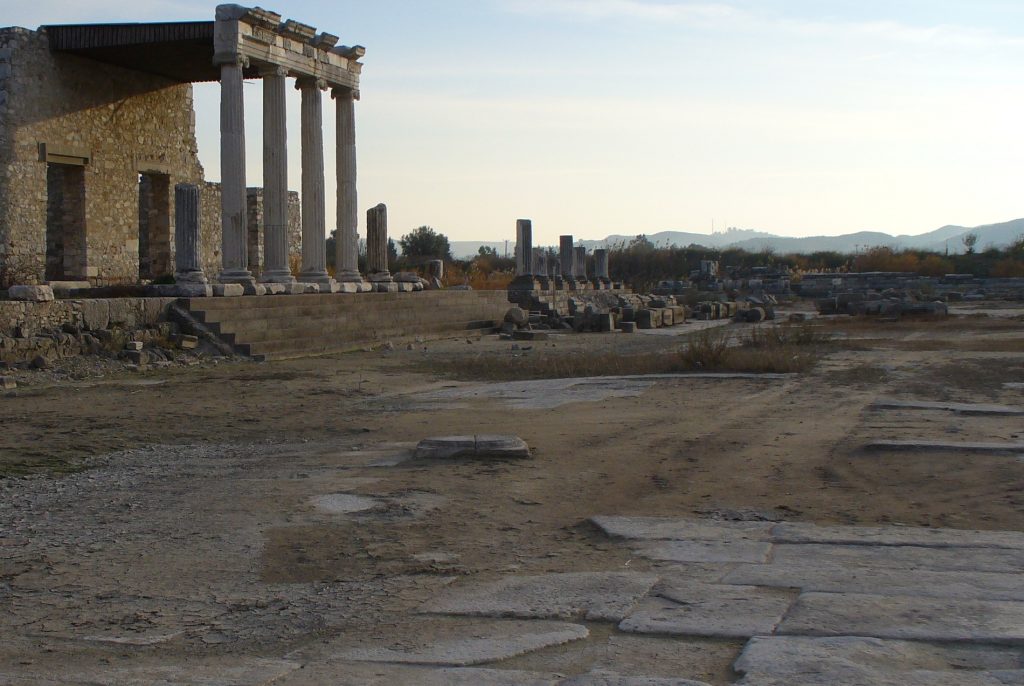
Miletus remained an important city for many centuries to come. Christian texts mention it as the meeting place in 57 A.D. of Paul and elders of the Church of Ephesus. Under the Byzantine Empire, the city became an archbishopric. The archaeological site displays the city’s long history, with town walls and foundations from the Hellenistic Era to the Roman theatre which lies adjacent to a Byzantine Castle.
What to see in Miletus today:
There are extensive remains of antiquity at Miletus. The archaeological park should feature prominently on the list of those in the area with an interest in the ancient world. Some of the most notable remains date to the 2nd century A.D. and stem from the beneficence of imperial patronage. There is a rather grandiose Nymphaeum, the frontispiece of which is modelled on the scaenae frons of a theatre, which dates to the reign of Trajan. To Faustina, wife of Marcus Aurelius, is attributed the once exquisite baths in the city, as well as the large theatre which could seat some 15,000 spectators.
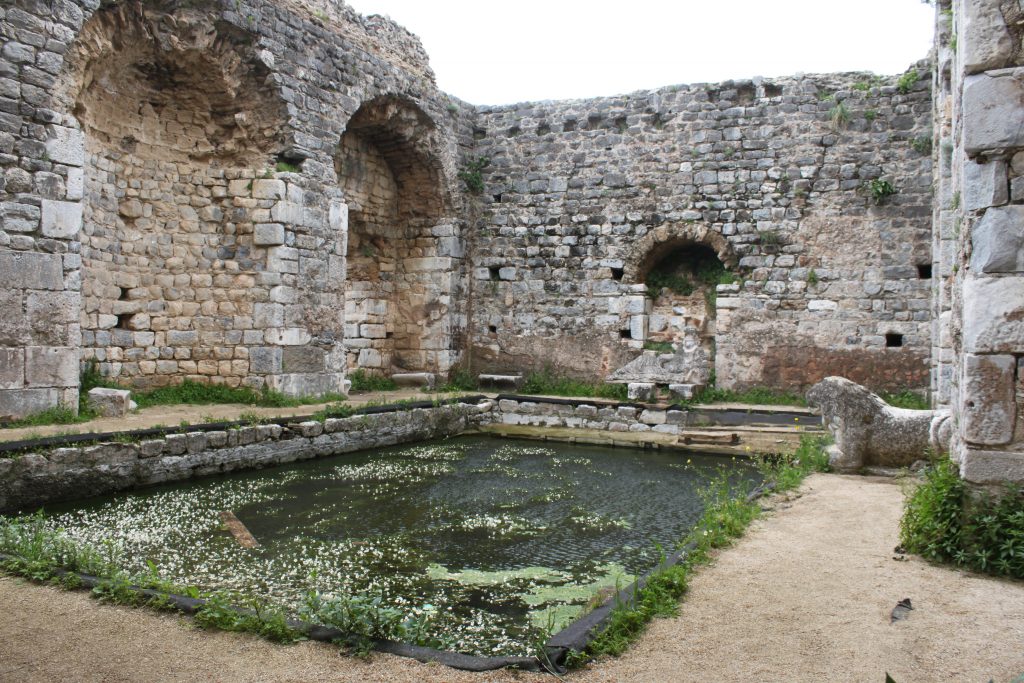
Faustina Bath Frigidarium in Milet by Matthias Holländer licensed under CC0
The oldest sanctuary in the city is dedicated to Athena, whilst there is also a Serapeum, dating to the late imperial era (possibly the reign of Aurelian in the latter 2nd century A.D.). One can also see the remains of urban life all over the site, including a number of Markets and a Bouleterion (council building).
Miletus on Timetravelrome app:
To find out more: Timetravelrome.
Author: written for Timetravelrome by Marian Vermeulen.
Sources: Plutarch, Life of Caesar; Suetonius, The Twelve Caesars: Julius Caesar
Header Photo: The theater of Miletus by Robin & Bazylek licensed under CC BY 2.0
